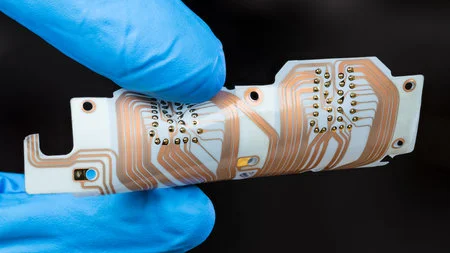As technology continues to evolve, the use of flexible and rigid-flex printed circuit boards (PCBs) is becoming increasingly common in a wide range of products. From medical devices to aerospace and defense applications, flexible and rigid-flex PCBs offer many benefits, including enhanced design flexibility, reduced size and weight, and improved reliability.
But which products actually require the use of flexible or rigid-flex PCBs? In this article, we'll take a closer look at some of the industries and applications that benefit most from these innovative PCB technologies.
Flexible PCBs
Flexible PCBs, as the name suggests, are PCBs that are designed to be flexible, and they can bend and conform to fit into various shapes and spaces. This makes them ideal for products that require intricate designs or have limited space available. Some of the most common products that require flexible PCBs include:
- Wearable Devices: Wearable devices, such as smartwatches and fitness trackers, require PCBs that can conform to the shape of the device and fit into small spaces.
- Medical Devices: Flexible PCBs are commonly used in medical devices due to their ability to bend and fold, making them ideal for applications that require flexibility and durability.such as pacemakers and medical implants, require PCBs that can bend and conform to fit into the patient's body. These devices include medical implants, diagnostic equipment, and monitoring devices.
- Automotive Electronics: Automobiles have various electronic components that require flexible PCBs due to their ability to bend and fit into tight spaces.
- Aerospace Electronics: Aerospace electronics require PCBs that can withstand extreme temperatures and vibrations, making flexible PCBs a suitable choice.

Rigid-Flex PCBs
Rigid-flex PCBs are a hybrid of flexible and rigid PCBs, offering the best of both worlds. They are composed of multiple layers of flexible PCBs and rigid PCBs that are combined to create a single board. This allows them to be more durable and reliable than flexible PCBs alone, making them ideal for products that require high levels of reliability and durability. Some of the most common products that require rigid-flex PCBs include:
- Telecommunications Equipment: Telecommunications equipment requires high levels of reliability, making rigid-flex PCBs a suitable choice.
- Military Electronics: Military electronics require durable PCBs that can withstand harsh environments, making rigid-flex PCBs an excellent choice.
- Industrial Automation Equipment: Industrial automation equipment requires high levels of durability and reliability, making rigid-flex PCBs a suitable choice.
- Consumer Electronics: Consumer electronics, such as smartphones and laptops, require PCBs that can withstand constant use and handling, making rigid-flex PCBs an ideal choice.
Conclusion
Choosing between flexible and rigid-flex PCBs ultimately depends on the requirements of the product being designed. While flexible PCBs offer flexibility and versatility in design, rigid-flex PCBs offer durability and reliability. By understanding the specific requirements of the product and its intended use, designers can choose the right PCB type to ensure optimal performance and reliability.










 2023-04-22
2023-04-22
 BEST
BEST

.png)
.png)
.png)
.png)

.png)

